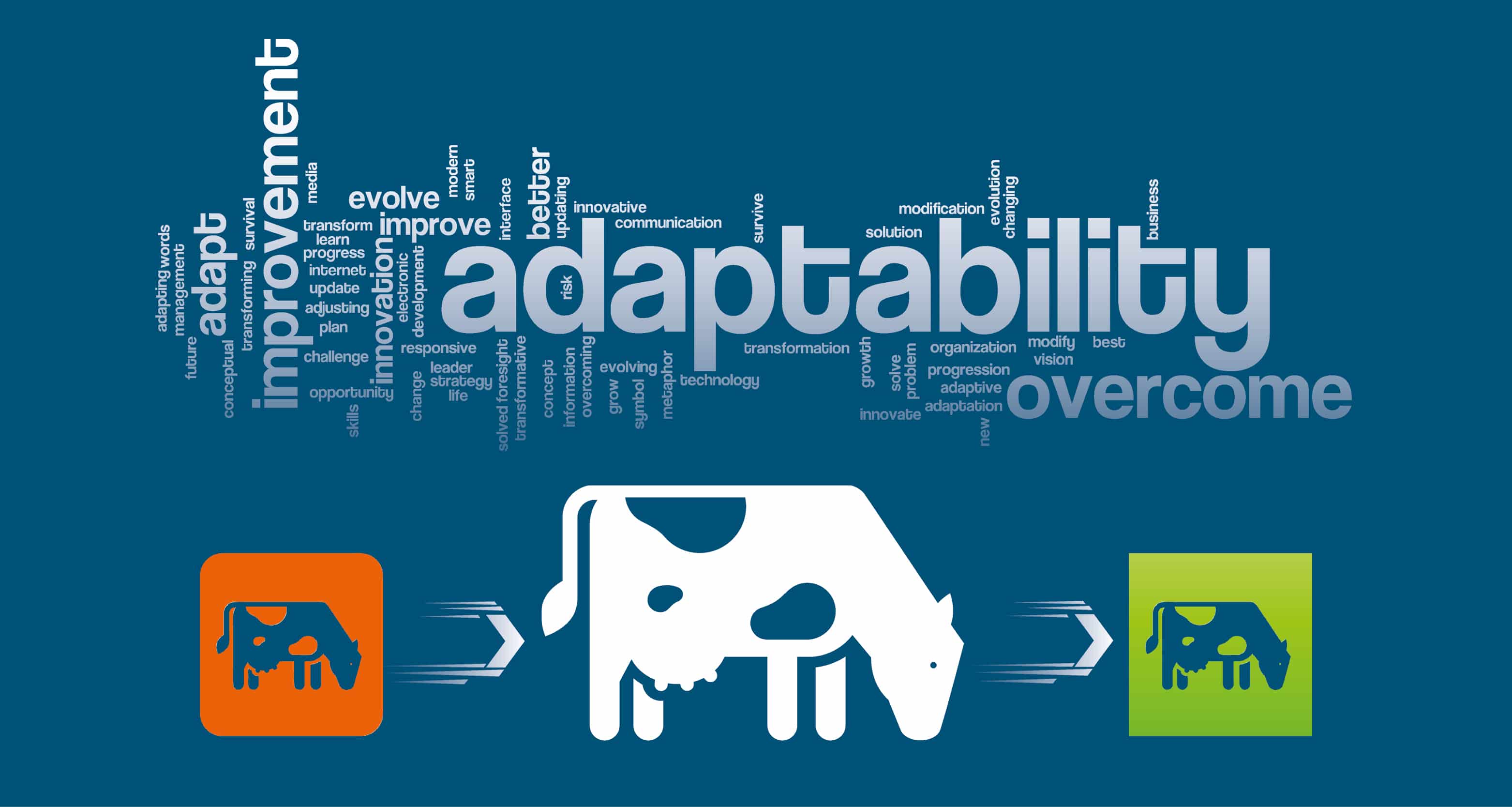Feeding cows for adaptive capacity in the transition period
The adaptive capacity of the cow determines transition success. When dairy cows fail to adapt physiologically to the demands of calving and the onset of milk production, the resulting metabolic stress leads to transition cow disorders with negative consequences for milk production, reproduction efficiency and longevity. The high prevalence of metabolic disorders and production disease around calving highlight the fact that many farm systems do not provide adequate solutions and are overstretching the adaptation capacity of their cows. Understanding the underlying mechanisms and factors exacerbating metabolic stress during transition can help to find nutritional solutions that enhance the adaptive capacity in transition dairy cows.
by Gwendolyn Jones, published in International Dairy Topics, 2020
Transition failures
The transition period is a demanding time for dairy cows and around 30% to 50% of dairy cows are affected by some form of metabolic or infectious disease, around the time of calving. This includes milk fever ketosis, retained placenta and mastitis. A declining availability of qualified dairy staff is likely to exacerbate this, as it means that cows are receiving less individual attention to identify and respond to health issues. When disorders occur, it is a demonstration that cows have difficulties in coping with external and internal conditions, endangering their own capacity to survive. It shows that the cows are failing to adapt to changes, stressors and gaps between nutrient supply and demand.
During the transition period dairy cows must adjust metabolically to a dramatic increase in energy and nutrient requirements needed for foetal growth and onset of milk production, exceeding the amount of energy the cow receives from dietary sources. This makes the cow susceptible to a negative energy balance. A negative energy balance initiates lipid mobilization, which again leads to high concentrations of non-esterified fatty acids (NEFAs). Metabolism of large amounts of NEFAs to ketone bodies induces an increased production of reactive oxygen species (ROS), which can eventually lead to oxidative stress in the liver of dairy cows.
Increased oxidative stress in dairy cows is recognized as an underlying factor of dysfunctional inflammatory responses and it has been linked to the occurrence of transition disorders. Oxidative stress in the liver is known to cause inflammatory damage of the liver, which impairs the metabolic function of liver cells and promotes the development of ketosis. In the mammary gland it has been associated with increased somatic cell counts in milk and the incidence of mastitis. Overall, these findings lead to the assumption that the underlying mechanisms that exacerbate metabolic stress and cause health disorders in transition dairy cows are combined effects of altered nutrient metabolism, oxidative stress and dysfunctional inflammatory responses.
Transition success
Successful adaptation avoids metabolic disorders in the transition period. Overall dairy cows are more likely to succeed in adaptation in the transition period when the gap between nutrient demands and supply is limited. However, there are also indications in the literature that even when cows had comparable energy balance, there is considerable individual variation of the adaptive ability of cows during early lactation based on metabolic and endocrine variables. Therefore, another approach is to find ways to support the cow in her ability to cope with nutritional and metabolic challenges, which would actually help the cow’s adaptability for transition success.
This amongst other things requires the identification of relevant markers that enable the measurement of achieving improved adaptability. One obvious marker for oxidative stress is the level of reactive oxygen species (ROS). However, more recent research suggests that the oxidative stress index (OSi) predicts oxidative status more accurately. The OSi is the ratio between ROS and serum antioxidant capacity. The researh shows that the OSi is significantly increased in dairy cows around calving, compared to levels at dry-off and at 30 days post calving. So one way of identifying improved adaptive capacity of cows in the transition period could be to measure the oxidative stress index in response to nutritional interventions.
Nutritional support for adaptive capacity
Researchers report that genetic selection for increased milk yield has decreased the adaptability of modern dairy cows. However, a better understanding of the underlying mechanisms for adaptability in dairy cows is helping the development of nutritional solutions to enhance the cow’s ability to cope more efficiently with nutritional and metabolic challenges.
For instance feeding plant extracts with high antioxidative powers can help to increase the level of antioxidative enzymes and antioxidants to support the cow’s own antioxidative defense in the liver. Feeding those type of components can give the liver a better chance of fighting ROS produced in the transition period and thus minimize the negative consequences from oxidative stress on liver function. A large part of the capacity of the adaptation of ruminants to dietary challenges is allowed by the rumen, so feed supplements designed to help maintain rumen efficiency are also going to ease the transition to lactation. However, attempts to reduce the prevalence of metabolic disorders and associated production diseases should rely on continuous and comprehensive monitoring with appropriate indicators on the farm level.


